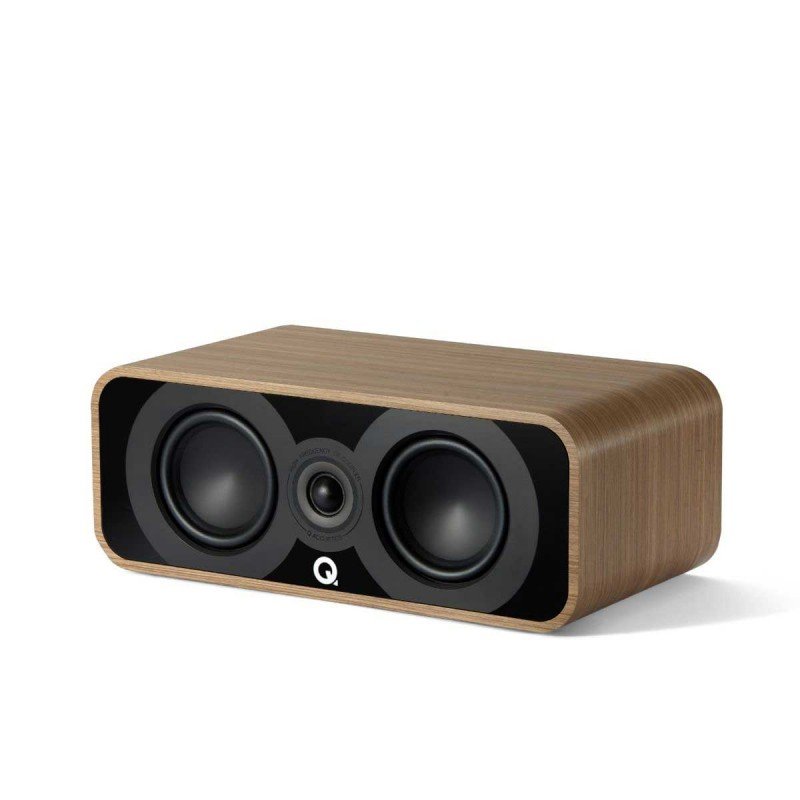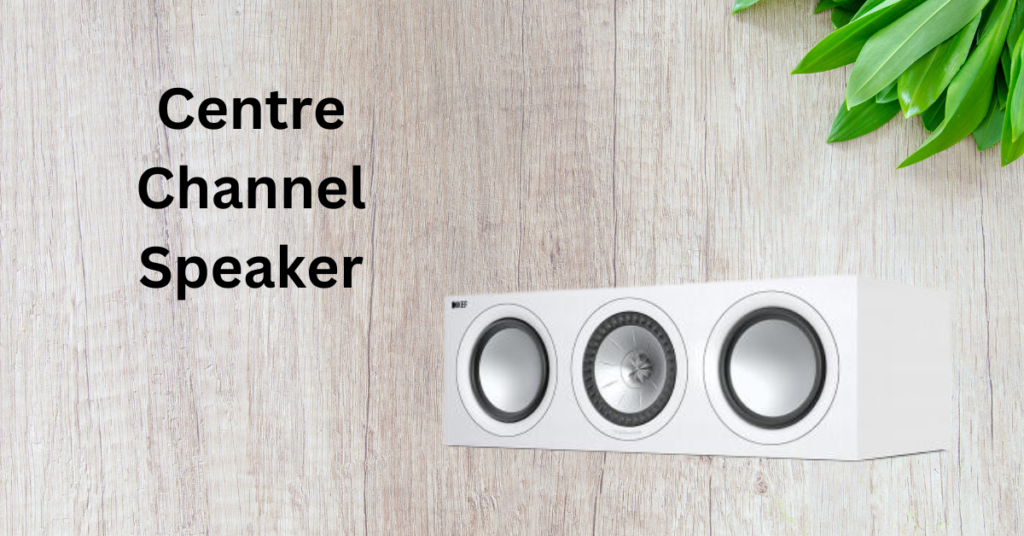1. Introduction about Centre Channel Speaker:
A Centre Channel Speaker is an essential component of a home theater system. It is responsible for delivering clear and balanced dialogue.
Center channel refers to an audio channel common to many surround sound formats. It is the channel that is mostly, or fully, dedicated to the reproduction of the dialogue of an audiovisual program. The speakers connected to the center channel are placed in the center of and behind the perforated projection screen, to give the effect that sounds from the center channel are coming from the screen. In many home surround sound units, the center channel is positioned above or below the video screen.

2. Centre Channel Speaker of a Home Cinema System:
A Centre Channel Speaker of a home cinema system can often go overlooked. The majority of dialogue is delivered from it, so it is important to find the right choice and ensure it matches the sound of your effects channels for a consistent enjoyable experience. It should bring a full, well-rounded sound while still being capable of delivering crystal clear dialogue for those soft spoken moments. Fyne Audio has matched the voicing and cabinet finishes to the relevant series, bringing a consistent look and sound to its centre channel speakers.
3. Specification of a Centre Channel Speaker:
Specification:
- Speaker Type: Centre Channel Speaker
- Frequency Response: Typically 50Hz – 20kHz
- Impedance: 4-8 ohms
- Sensitivity: Around 85-95 dB
- Power Handling: 50W – 200W (depending on model)
- Connectivity: Wired (binding posts or spring clips)
- Material: MDF cabinet with acoustic damping
- Size & Weight: Varies by model, commonly 18-24 inches wide
4. History of Centre Channel Speakers
Centre channel speakers became popular with the rise of Dolby Surround Sound in the late 20th century. Initially home audio systems relied solely on left and right speakers but as surround sound technology evolved the need for a dedicated Centre channel arose. This speaker ensures that dialogue remains clear and centrally focused preventing it from being lost amidst background music and sound effects. Today, Centre Channel Speakers are a standard component in home theater setups worldwide.
5. How to Use a Centre Channel Speaker
1. Placement:
- The ideal position for a Centre channel speaker is directly above or below your television screen ensuring that sound aligns naturally with on screen dialogue.
- If mounting above the TV angle the speaker slightly downward toward the listening area.
- If placing below the TV use a speaker stand or foam pad to angle it upward ensuring direct sound projection.
2. Connection:
- Connect the speaker to your AV receiver using high-quality speaker cables. Ensure that the correct terminals (positive and negative) are matched properly to avoid phase issues.
- Most Centre speakers use binding posts or spring clips for connection; ensure they are tightly secured to prevent audio dropouts.
3. AV Receiver Configuration:
- Access the receiver’s speaker setup menu and designate the Centre channel speaker as “Small” or “Large” based on its capabilities.
- Set the crossover frequency typically around 80Hz to balance the distribution of bass frequencies between the Centre speaker and the subwoofer.
- Adjust the Centre channel volume level to ensure dialogue is clear and prominent without overpowering other speakers.
4. Surround Sound Calibration:
- Use your AV receiver’s built-in calibration system (such as Audyssey YPAO or MCACC) to fine-tune the Centre speaker’s output and match it with the rest of the speakers.
- If your receiver does not have automatic calibration manually adjust the speaker distance and volume levels for optimal synchronization.
5. Fine-Tuning for Best Performance:
- Increase treble settings slightly if dialogue sounds muffled or unclear.
- If voices seem too sharp or harsh, adjust the equalization (EQ) to slightly reduce higher frequencies.
- Experiment with different settings to find the best balance for your room acoustics and personal preferences.
6. Maintenance and Care:
- Regularly dust the speaker grille and enclosure to prevent dust buildup which can affect sound clarity.
- Keep the speaker away from direct sunlight or excessive heat to preserve its components.
6. Benefits of a Centre Channel Speaker
- Enhanced Dialogue Clarity: Ensures that speech and vocals are distinct and audible, even in complex soundscapes.
- Balanced Audio Experience: Works with left and right speakers to create a cohesive and immersive sound field.
- Improved Surround Sound: Enhances cinematic experiences by delivering precise and directional audio.
- Customizable Audio Settings: Allows users to fine-tune settings to match their room acoustics.
- Better Movie and Gaming Experience: Provides more accurate sound reproduction for an enriched entertainment experience.
7. What to look for in a centre-channel speaker
Investing in the best centre-channel speaker that your budget will allow will deliver clearer and more detailed vocals, rewarding you with a better TV and movie-watching experience.
You should also consider where to place your centre speaker. If you’re placing it on AV furniture, the OPTICON VOKAL MK2 and wireless active OBERON VOKAL C are great options. With their front-facing letterbox reflex ports, these centre speakers deliver clean and controlled bass even when hidden out of sight behind the mesh door of a TV cabinet.
The OBERON VOKAL and OBERON GRAND VOKAL also offer outstanding sound when matched with other speakers from the OBERON range. And if you have a higher budget, the EPICON VOKAL is the ideal accompaniment to an EPICON floor stander setup.
8. Customer Feedback
- “Great build quality and excellent sound projection – highly recommended for any home theater setup.”
- “The Centre channel speaker has drastically improved the clarity of dialogue in movies. No more missing important lines!”
- “It integrates seamlessly with my surround sound setup making the experience much more immersive.”
- “Initially had an issue with low volume but adjusting the settings made a huge difference.”
Conclusion:
A Centre channel speaker is a vital component of any home theater system enhancing dialogue clarity and providing a balanced surround sound experience. Proper setup placement and calibration ensure optimal performance. While common issues may arise they can often be resolved with simple adjustments. Investing in a high quality Centre channel speaker significantly improves your audio experience making movies music and games more immersive and enjoyable.



